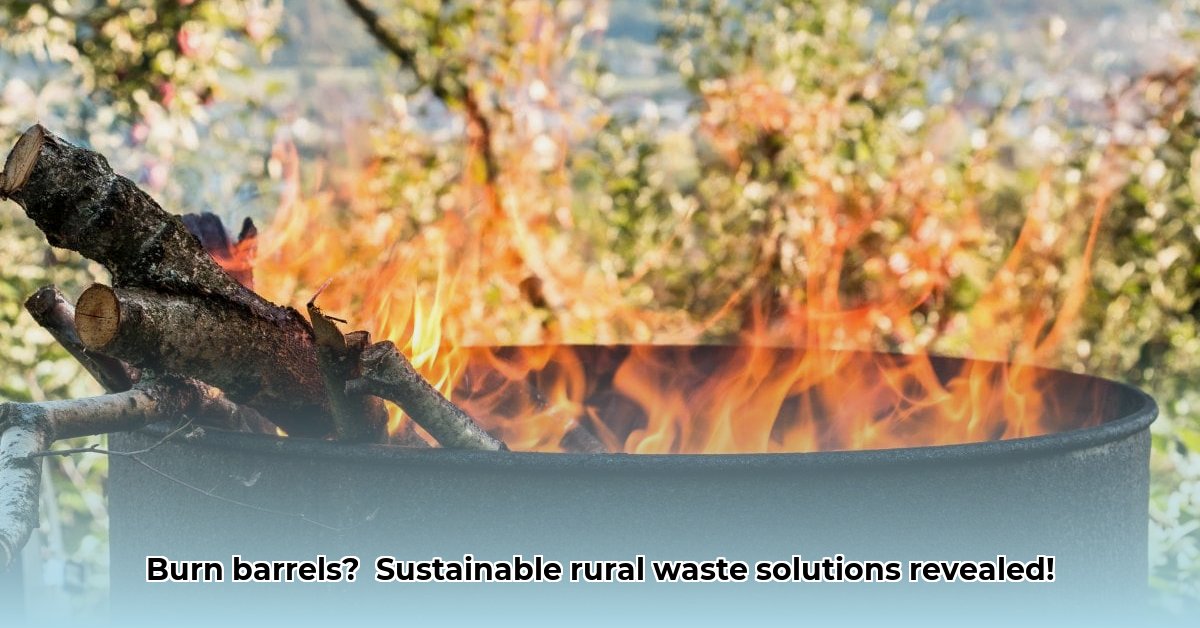
Let's address the readily available burn barrels at Tractor Supply and their implications for sustainable agriculture. While seemingly a simple solution for waste disposal, their use presents a significant conflict with environmentally responsible practices. This article explores the limited circumstances where burn barrels might be acceptable, the substantial environmental concerns, and the readily available sustainable alternatives. For more on alternative solutions, check out this helpful resource on galvanized garden beds.
Limited, Context-Specific Uses of Burn Barrels
In extremely limited situations, a burn barrel might be permissible. This is only the case when dealing with small quantities of completely dry agricultural waste (e.g., pruned branches from disease-free plants) in areas where local regulations explicitly allow controlled burning. Crucially, this requires obtaining all necessary permits and adhering strictly to safety guidelines, burning far from structures with ample water readily available. This is not the norm; it's a highly specific exception. For the vast majority of situations, safer and more sustainable methods are preferable.
Environmental Impacts of Burn Barrels: Air and Soil Pollution
The significant environmental drawbacks of burn barrels cannot be overstated. Burning waste generates air pollution, releasing harmful toxins and particulate matter that contribute to respiratory problems and decreased air quality. Further, soil contamination often results from the deposition of these pollutants, affecting water quality and harming local ecosystems. The cumulative impact of numerous burn barrels across rural areas significantly contributes to environmental degradation. Isn't it time we questioned the long-term sustainability of this practice?
Sustainable Alternatives: Practical Solutions for Responsible Waste Disposal
Fortunately, effective and environmentally sound alternatives to burn barrels exist. Consider these options:
Composting: This simple process transforms organic waste (leaves, grass clippings, and suitable food scraps) into nutrient-rich compost, a natural soil amendment that benefits your crops and reduces reliance on chemical fertilizers. Composting is often low-cost, simple, and effective, reducing overall waste.
Anaerobic Digestion: A more advanced technique using microorganisms to break down organic matter in oxygen-free environments. Anaerobic digestion produces biogas, a renewable energy source, and digestate, a nutrient-rich fertilizer. While requiring a larger initial investment, it offers highly sustainable long-term benefits.
Municipal Waste Services: Many municipalities offer waste collection services tailored to rural areas. Check with your local government for programs that handle agricultural waste, including specialized pick-ups for large volumes or specific materials. These services provide an environmentally responsible disposal option.
Tractor Supply’s Role and Opportunities for Improvement
Tractor Supply’s role in the availability of burn barrels presents an opportunity for positive change. By providing comprehensive information on sustainable waste management alongside burn barrels, they can significantly impact environmentally responsible practices among their customers. This could include in-store displays, brochures, or online resources linking to local composting facilities and waste management services. Highlighting the limitations of burn barrels and promoting alternatives in their marketing materials would demonstrate a commitment to sustainable agriculture.
Conclusion: Embracing Sustainable Waste Management
The responsible disposal of agricultural waste is paramount. Shifting away from environmentally damaging practices like open burning and embracing sustainable alternatives—composting, anaerobic digestion, and municipal services—is critical for a healthy environment and a thriving agricultural future. Let’s strive for practices that protect our planet and contribute to a more sustainable future.